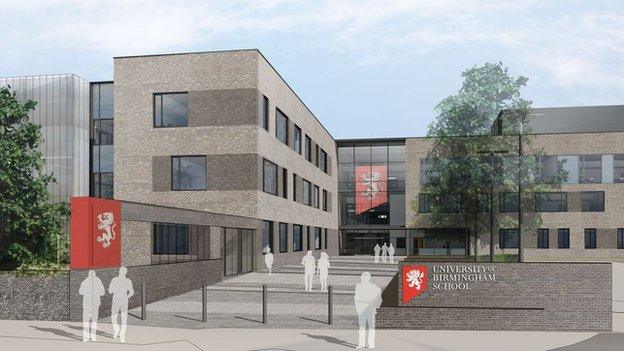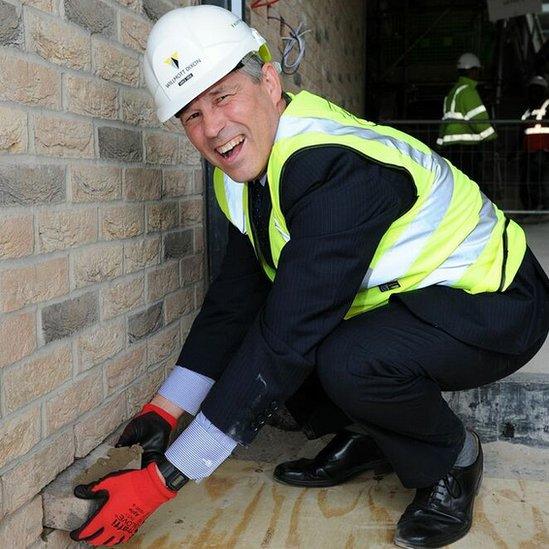One school, four catchment areas
- Published

The Birmingham school has four separate locations for measuring distance for admissions
One school, four catchment areas? Would that be a fairer way of running admissions or a recipe for an even more Byzantine way of prioritising applications?
The rising school population is putting more pressure on places at popular schools - and raising the thorny question of school admissions.
The most common way of prioritising applications is how close pupils live to a school.
But where you live is inextricably linked to income, and sought-after schools can end up with catchment areas that are tight halos of inflated property prices.
A major study last year suggested that using distance from home to school to decide admissions was one of the biggest drivers of social division in the school system.
Bucking the housing market
But if you were starting from scratch, how could you avoid this?
A new school in Birmingham, opening in the autumn, is experimenting with an admissions system based on multiple catchment areas.
The secondary school, an academy being sponsored by the University of Birmingham, will provide some of the extra places urgently needed in the city.

School principal Michael Roden lays the final brick in the front wall
The University of Birmingham School will have new buildings, a strong academic ethos and will benefit from links to the university and its staff and facilities.
And if it used a conventional admissions system, based on distance, it would be very likely to become a magnet for middle-class families and be accused of poaching pupils from existing schools.
But the school is actively trying to do something different.
It is basing its admissions for 11-year-olds on how close families live to four "nodes" across the city.
One of these will be the school site in Selly Oak and the other three are in Small Heath, Hall Green and the Jewellery Quarter.
Inventing diversity
After siblings and looked-after children, half the intake will be based on closeness to the school, with the other half of pupils shared between closeness to the other three points on the map.
Working with the city council, it is a deliberate attempt to create a mixed intake - mixed in terms of socio-economics, ethnicity and academic ability.
The first pupils, starting in the autumn, will come from 61 different primary schools.

Could multiple catchment areas weaken the link between house prices and school places?
It allows the school to construct an intake from across the city, rather than being limited to families living on the school's doorstep.
It means it can target areas of the city identified as having a lack of capacity in the school system.
In some ways it is accepting that the intake of ordinary comprehensives is no longer comprehensive - and such a diverse intake has to be artificially assembled.
Even though the language of admissions often talks about both "choice" and "fairness", it's often really about prioritising a queue. And for parents it can feel like both choice and fairness are in short supply.
This idea of multiple points for measuring distance will join a long list of ways of determining priority in the state system, including straightforward proximity, special and social need, ability bands, faith, gender, academic selection, aptitude for a particular subject or by lottery.
Each of them will have advantages and disadvantages for individual families. With the multiple catchment areas, it means that some pupils who would have got a place under a direct proximity rule will lose out to another further afield in the city.
And what would happen if every school in a city began to socially engineer such complex patterns for its intake?
The university school says the "nodal admissions policy" was the best way of achieving its aims - getting a mixed intake from across the city, without a "disproportionate impact" on other schools near their site.
"No other policy we reviewed would have been as effective at supporting opportunities for a range of children across the city to attend and helping to ensure we are a school for the city of Birmingham," said a spokeswoman for the university school.
Michael Roden, principal of the University of Birmingham School, said: "In just a few short months, our first pupils will walk through the doors. It is a hugely exciting time."